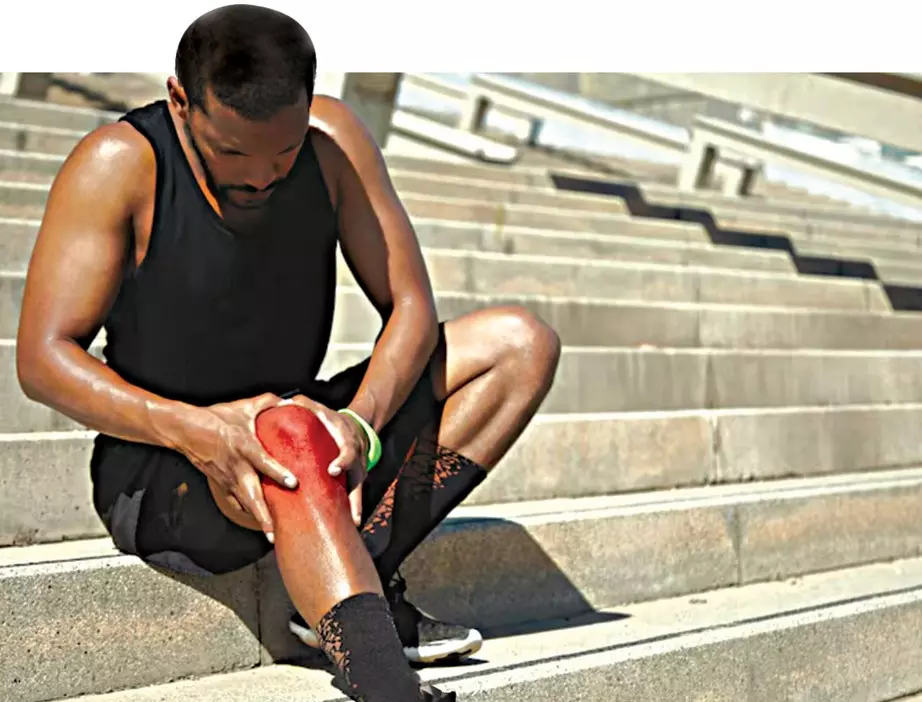Avoid Getting ‘Pickled’ With Aches & Pains
As the popularity of pickleball surges, so do instances of sprained ankles and joint pains, experts serve ace advice on correct form and preventable injuries

Pickleball aches (Image:DC)
Any booming trend comes with a hidden cost. The ‘Pickleball & Paddle’ game, once a niche sport, has taken India and the world by storm. In 2025, pickleball became the most searched sport on the internet. Touted for its accessibility, sociability, and relatively low skill threshold, these games have attracted an enormous following, particularly among older adults and previously inactive individuals.
However, behind the hype lies a quieter concern—a growing wave of injuries related to these fast-paced racquet sports. From twisted ankles to serious joint issues, physiotherapists and healthcare professionals are witnessing a surge in preventable injuries as the sports' popularity rises.
Paddle Up Wisely
Dr. Karishma Sanghavi, a Sports Physiotherapist and Certified MDT with the McKenzie Institute of India, has seen a significant uptick in patients dealing with issues caused by improper form, lack of conditioning, and inappropriate gear.
“As physiotherapists and health professionals, we continue to observe a growing concern,” Dr. Sanghavi says. “This sudden boom has indeed brought a parallel rise in sports-related injuries, especially among those new to physical activity. This lack of awareness to warm up, move and recover is leading to a steady rise in preventable injuries—from sprains and strains to more serious joint and back issues.”
She adds that most of these injuries could be avoided with simple, consistent habits and the right equipment.
Aishwariya Singh, a physiotherapist and movement specialist, emphasizes that the rise in pickleball-related injuries is largely due to poor physical preparation. “Many of the patients we see are jumping into these sports without a basic foundation of mobility and strength. They’re often weekend warriors who are enthusiastic but lack the core stability or joint conditioning needed for repeated lateral movement. We need to promote the idea that these are real sports—not just casual games—and that means training your body accordingly.”
Dink & Serve
While these games are often seen as low-impact alternatives to tennis or squash, that perception can be misleading. The majority of injury cases occur among adults above 35—especially first-time players who jump into competitive games without proper warm-up or strength training.
Karan Nair (32), an IT professional and first-time pickleball player from Chennai was drawn to the game by its community vibe and quick learning curve. But after two weeks of play, he landed badly during a rally and suffered a moderate ankle sprain. “I had no idea there was such a thing as pickleball shoes or warm-up routines,” Karan admits. “I just wore my regular running shoes and went straight into the court. It’s frustrating because I was just starting to enjoy the sport. Now I’m sidelined for weeks.”
A Sport For Life
Clubs and indoor arenas across India are seeing packed courts and waiting lists.
The pickleball and paddle explosion shows no signs of slowing down. For many, these sports offer a unique blend of exercise and community connection. But as Dr. Sanghavi points out, longevity in these sports depends not just on enthusiasm but on preparation. “The goal isn’t just to get people playing—it’s to keep them playing pain-free and long-term.”
For players like Karan, the injury was a wake-up call, not a full stop. He’s now undergoing physiotherapy and plans to return to the court—this time with proper shoes, a warm-up routine, and better body awareness.
Parting Shot
The rise of pickleball and paddle is a welcome shift toward active lifestyles, but it’s crucial to pair fun with function. With the right gear, conditioning, and education, players of all ages can enjoy the game—and avoid becoming a statistic in this silent injury epidemic.
Game On!
Dr. Karishma Sanghavi outlines a clear list of precautions that players—especially beginners—should follow:
Warm-up and Cool-down: Always start and end sessions with 10–15 minutes of stretching and dynamic movement.
Proper Footwear: Avoid running shoes.
Indoor courts require light, non-marking shoes for agility; outdoor surfaces demand thicker shoes with better cushioning for joint protection.
Athletic Posture: Keep knees bent and weight slightly forward to remain balanced and avoid sudden strain.
Controlled Movements: Avoid sudden lunges or squats during rallies to protect knees and ankles.
Regular Conditioning: Players should maintain a gym routine focusing on mobility, strength, and balance.
Work Out Planner
Incorporating certain exercises can dramatically improve performance and reduce injury risk. These workouts not only support in-game performance but also fortify the body against the repetitive strain both sports demands.
Ideal workouts for pickle and paddle enthusiasts are:
Squats with Resistance: For lower limb strength and stability.
Medicine Ball Throws: To enhance core engagement and explosive power.
Single-leg Deadlifts: Excellent for improving balance and control.
Agility Ladder Drills: Essential for developing quick footwork and reaction time.
Indoor courts require light, non-marking shoes for agility; outdoor surfaces demand thicker shoes with better cushioning for joint protection.
Athletic Posture: Keep knees bent and weight slightly forward to remain balanced and avoid sudden strain.
Controlled Movements: Avoid sudden lunges or squats during rallies to protect knees and ankles.
Regular Conditioning: Players should maintain a gym routine focusing on mobility, strength, and balance.
Work Out Planner
Incorporating certain exercises can dramatically improve performance and reduce injury risk. These workouts not only support in-game performance but also fortify the body against the repetitive strain both sports demands.
Ideal workouts for pickle and paddle enthusiasts are:
Squats with Resistance: For lower limb strength and stability.
Medicine Ball Throws: To enhance core engagement and explosive power.
Single-leg Deadlifts: Excellent for improving balance and control.
Agility Ladder Drills: Essential for developing quick footwork and reaction time.
( Source : Deccan Chronicle )
Next Story

